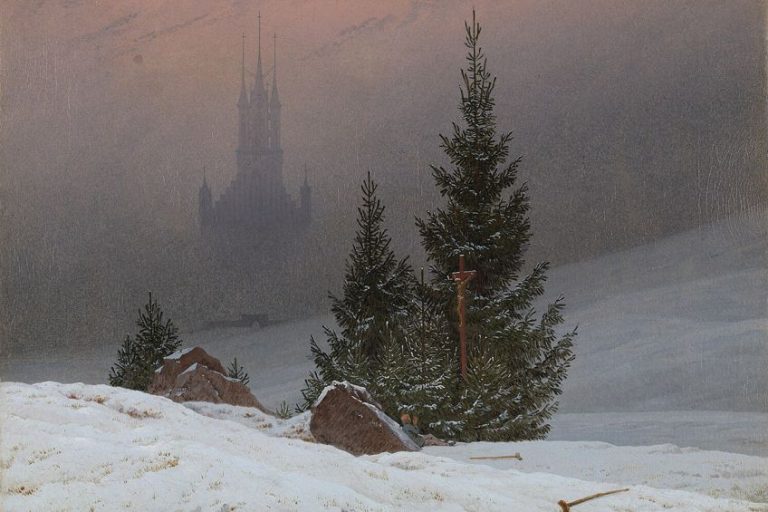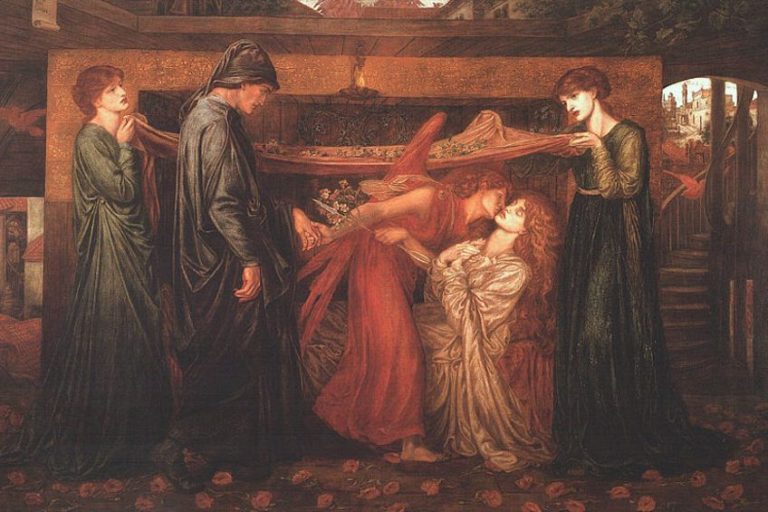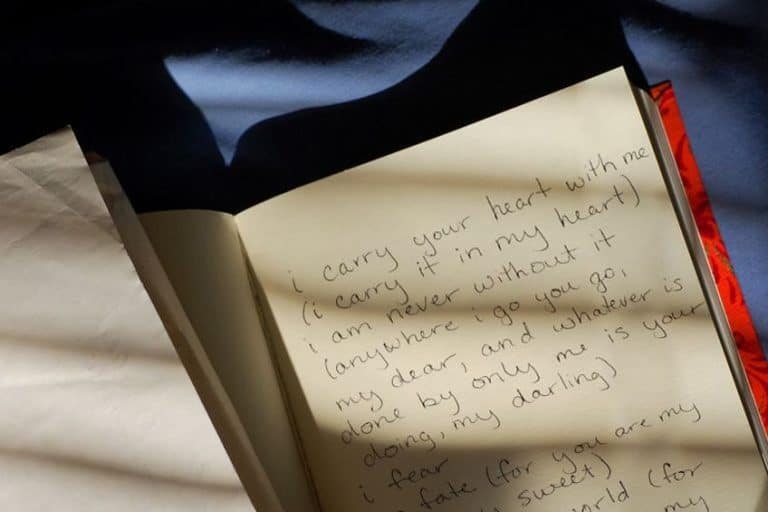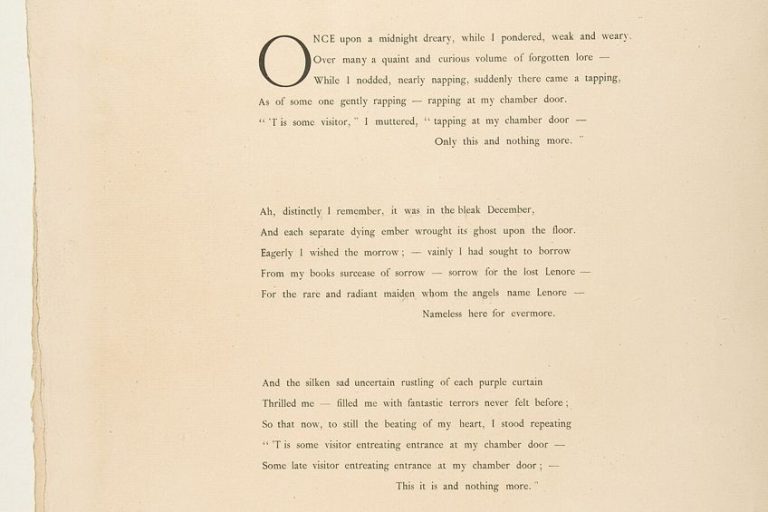“Howl” by Allen Ginsberg – A Detailed Poetic Analysis
The release of Howl by Allen Ginsberg was one of the most significant publications of the mid-1950s. This poem has come to be seen as the quintessential poem of the Beat Generation, and an immensely influential text. The first line of the poem is also seen as highly quotable and has been the subject of many references and parodies over the years. This text by Ginsberg was a howl against society and a conformist mindset, and this article will attempt to explore that in some level of depth. I will examine the author, provide an analysis of the poem (as well as a supplement to it), and even go over some of the other elements that can be found in and around it. If this seems like your kind of jazz, then come on over and read some more!
Howl by Allen Ginsberg Analysis
| Date Published | 1955 |
| Type of Poem | Epic poem |
| Rhyme Scheme | None |
| Meter | None |
| Topic | Critique of American society |
An examination of the literary world of the 20th century would be woefully incomplete without a look at Howl by Allen Ginsberg, and that is why we will be having a look at it today. This poem is a prominent text from the Beat Generation, and it would go on to serve as an inspiration for many poets for decades to come. The poem would also have a cultural impact because of its place in an obscenity trial that attempted to ban it. However, we will get to each of these topics in time. We should first have a look at a summary because it may prepare us for what we have before us today.
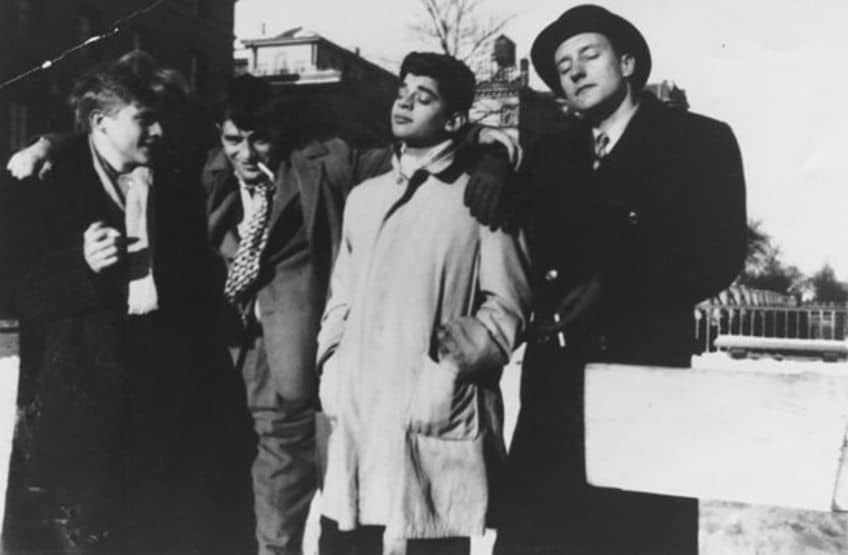
Howl by Allen Ginsberg Summary Points
The only real way to dive deep into the world of Howl by Allen Ginsberg is to read it and check out a few analyses, such as the one that can be found below. However, you may also be looking for a short summation of the poem or what it is about, and the summary below should be able to do that for you:
- Howl by Allen Ginsberg is a critique of American society. The poem presents various critiques through what it describes. It shows the parts of society that have often been deemed undesirable by the more conservative politics of the United States. The poem would come to be seen as a cry of the Beat Generation thanks to this.
- Howl by Allen Ginsberg is a long poem. The poem is about 3000 words long and is made up of 122 “lines”, which are more like short paragraphs than standard lines as you would see in traditional poetry. This means that the poem can take quite a long time to read.
- Howl by Allen Ginsberg is seen as the great poem of the Beat Generation. The poem was seen as an instant success within the Beat community, and it soon became prominent throughout the country. The text even got caught up in an obscenity trial because of what it depicts, and this has only added to its influence.
This summing up of the things that we are soon to discuss is far from perfect, and as a former English teacher, I would implore you to read more than just a summary. If you want to learn and understand Howl by Allen Ginsberg, then you’ll need to do some more reading.
And this analysis is a good starting position.
Biography of Allen Ginsberg
| Poetic Movement | Beat Generation |
| Years | 1926 – 1997 |
| Place of Birth | Newark, New Jersey, United States |
| Known For |
|
Allen Ginsberg was an influential American writer who is best known for writing Howl, but he did write various other texts too. One of the most notable aspects about him was that he was one of the principal members of the early Beat Generation. He was seen as one of the founding members of the movement, and he was personal friends with major figures in the movement, like Jack Kerouac and William S. Burroughs.
He, along with the other Beat Poets, would rebel against the kind of conformism that was prevalent in the repressive society of the mid-20th century in the United States. His most famous poem, which will be the primary thing that I examine today, is one such immense critique of the society that gave birth to the rebelliousness of the Beats. His work, and the work of the other Beats, would be opposed to the kind of militaristic mentalities of the United States as well as the capitalism they had grown up around and the sexual repression that was deemed ordinary.

The Beats and Ginsberg were very much a part of this and would engage in various parts of counterculture, such as sexual liberation and open drug use. He was also a gay man during a time when such a thing was extremely frowned upon and even “treated” as a psychiatric disorder. His interests also led him to a firm embrace of Eastern religious teachings, and he lived his life as a Buddhist.
Allen Ginsberg stayed true to his convictions throughout his life and took great interest in political causes. His work would receive numerous accolades throughout his career, and Howl would even become immortalized as one of the most important texts to have ever been written, especially because of its place in terms of literary obscenity laws. So, perhaps we should finally get to the poem itself because we aren’t going to get to the analysis of Howl by Allen Ginsberg without actually getting into it!
An Analysis of Howl by Allen Ginsberg
I have spent until now speaking about Howl by Allen Ginsberg in far more abstract terms, but to really understand it, we need to get into our discussion of the poem itself. So, how is the text written? Well, it makes use of a free verse style throughout, but this free verse style is also quite unlike all other poems. It does not make use of the usual forms of standard poetic features, like rhyme or meter, but it does have a strong flow to it. There is a certain music-like quality to it that came from some of its jazz influences.
On top of that, while the poem lacks the standard poetic features you’d find in more traditional poetry, that musical quality means that it is full of alliterative and repetitive elements. It flows off the tongue in quite a satisfying way, and so we cannot say that Howl by Allen Ginsberg entirely follows a lot of free verse poetry in the way that it might be strange or peculiar to read, but rather that it refuses to follow the norm.
One of the biggest changes it makes is the use of long lines.
These lines always run across the page and can sometimes end up as several lines long. This means that they are sometimes akin to short paragraphs rather than what we might ordinarily view as normal lines of poetry. This means that Howl by Allen Ginsberg looks very different on a page. This text does not have the kind of appearance that we have come to expect from traditional poetry.
These immensely long lines also facilitate the poem’s incredible length. While there certainly have been far longer poems, such as the ancient Greek Homeric epics, Howl by Allen Ginsberg is still a long text. It equals up to about 3000 words in length and that length is made up of 112 of these long lines. This means that a full reading of this text will probably take you some time.
This also means that the analysis I will perform today will be a little different from how I usually do it. Typically, when I have a look at a poem on this site, I paste the entire poem into the article so that you can have a look at the lines for yourself and then I perform a line-by-line analysis. However, a line-by-line analysis of a 3000-word poem would result in something like a short book-length analysis. So, I will not be doing that! Instead, this analysis will discuss each of the parts of the poem in more general terms than an extremely in-depth analysis.

So, before I get into that analysis of Howl by Allen Ginsberg, I should probably first give you a bit of a rundown on the structure of this poem. Very basically, it has three different parts, and while each of those parts does move the principal themes forward, they all have vastly different styles. Sure, they all have the same long lines and more peculiar delivery, but they go about it in very different ways.
In addition to that, I will also provide a brief analysis of Footnote to Howl, which was a supplementary text that has come to be seen as part of Howl by Allen Ginsberg. It is not technically part of the original poem, but it has generally been seen as part of it in the present day. And with all of that out of the way, I can finally show you some of this poem, but I would also recommend having a look at the poem yourself first.
Part I
The first part of Howl by Allen Ginsberg is definitely the most famous part. The first line is also a potent one that has been used repeatedly ever since in many places. It is also a line that informs what the entire first part of the poem is about, and that line reads: “I saw the best minds of my generation destroyed by madness, starving hysterical naked”.
This line will go on to explain much of what follows. Ginsberg critiques the kind of culture that he found around him, and it is these “best minds” that he shows. The best minds of the generation in his opinion are not those that a conservative society would deem the best but are rather the members of society who have often been pushed to the side by broader society. The first part of the poem concerns various groups doing various things, and they are discussed in often unflattering ways, but very real ways.

The events that are depicted are those that were directly experienced by Ginsberg, and so he mentions and discusses various groups, such as fellow writers and artists, drug addicts, musicians, the mentally ill, and political dissidents. For instance, one of the sections of this part of the poem discusses those with “dark skin” who put out pamphlets, and this poem was written during the American Civil Rights Movement, and so those pamphlets would have been connected to groups such as those who fought for human rights.
There are also instances of political and societal issues on display, such as those who have been thrown into police cars “for committing no crime”. However, one of the major points that came to be important when this poem faced legal issues was that there are very frank depictions of sexual intercourse of both homosexual and heterosexual varieties, and these sexual acts are also depicted as casual sexual encounters rather than those in committed relationships. These kinds of depictions say something about the political landscape in which Howl by Allen Ginsberg was written and published. These were the groups that had been cast away by mainstream society, and this poem highlighted them, their lives, and their struggles.
A strong piece of the form in this section is the repetitive use of the word “who”, and this serves as a rhythmic piece that can serve as an anchor for the text’s discussions. This particular aspect of the poem is repeated, in some sense, in the next part of the poem.
Part II
While the first part of Howl by Allen Ginsberg does make repetitive use of the word “who”, there is a bit of a difference in the second part, and that is the use of different forms of “who”, such as “whom” and “whose”. This still serves as a stylistic anchor and a point for a music-like repetition, but it also becomes less noticeable here because of the constant repetition of a different and much more obvious word: Moloch.
Before we continue, what is Moloch? Well, the word should be familiar to those who know their Bible rather well. The name appears in several places but has a much more prominent place in the Book of Leviticus. There are disputes about whether it refers to a practice or a god. However, when it is discussed in the Bible, it is always discussed in relation to certain negative practices. These are especially associated with child sacrifice. And so, when Howl by Allen Ginsberg repeatedly uses the term “Moloch” in this section, it is referring to something monstrous.

This monstrous force is shown as being the thing to which those discussed in the first part of the poem have been sacrificed. In the actual poem, the way in which Moloch is described is as society. It discusses the “machinery” of the beast, and these are things like Congress, prisons, skyscrapers, and so on. It is the society itself that is taking in those who have been neglected and feasting upon them.
It is not hard to see this entire part of the poem as describing the terrible fate of those who do not conform. All must be sacrificed to Moloch and society, and the critique of American culture can be seen on full display here. The poem’s second part is very different to read than the first part, and also significantly shorter.
We can say the same about the third part of the poem.
Part III
Now, I have not mentioned it until now because it was not directly referenced until this point. However, the entirety of the poem was written in dedication to an acquaintance of Ginsberg’s named Carl Solomon. This man was a writer who Ginsberg met while at a mental hospital for a time, and in the third part of Howl, Solomon is directly mentioned. He is addressed as the speaker states that “I’m with you in Rockland”. Now, this place is meant to be a psychiatric institution, but it has been pointed out, even by Carl Solomon himself, that they were not in Rockland. However, “Rockland” sounds a lot better than where they really were, which was the Columbia Presbyterian Psychological Institute. Doesn’t quite roll off the tongue, now does it?

As for the structure of this part of the poem, it is quite different from both of the sections that have come before. There is the constant repetition of “I’m with you in Rockland”, but each of the lines becomes progressively longer and longer until they are essentially paragraphs. Furthermore, in this section, there is a constant discussion of mental illness and psychiatric practice, such as electroconvulsive therapy.
The theme of mental illness has been on display throughout the poem, but this part directly highlights it far more than before. While the second part of the poem is focused on something terrible, this section is far more focused on a certain sense of glory that can be found within what society has deemed to be wrong. This section ends things off on a far more positive note.
Moloch may be out there and attempting to grind everything down, but there are still pieces of hope out there that can be found.
Footnote to Howl
While Howl by Allen Ginsberg may be over, the Footnote to Howl provided something of an additional element. It has a similar repetitive structure to the second part, but instead of constantly repeating “Moloch”, it instead repeats “Holy”. There is a far more positive aspect to everything in this particular section as everything is deemed to be holy, such as the homeless, parents, typewriters, and cafeterias.
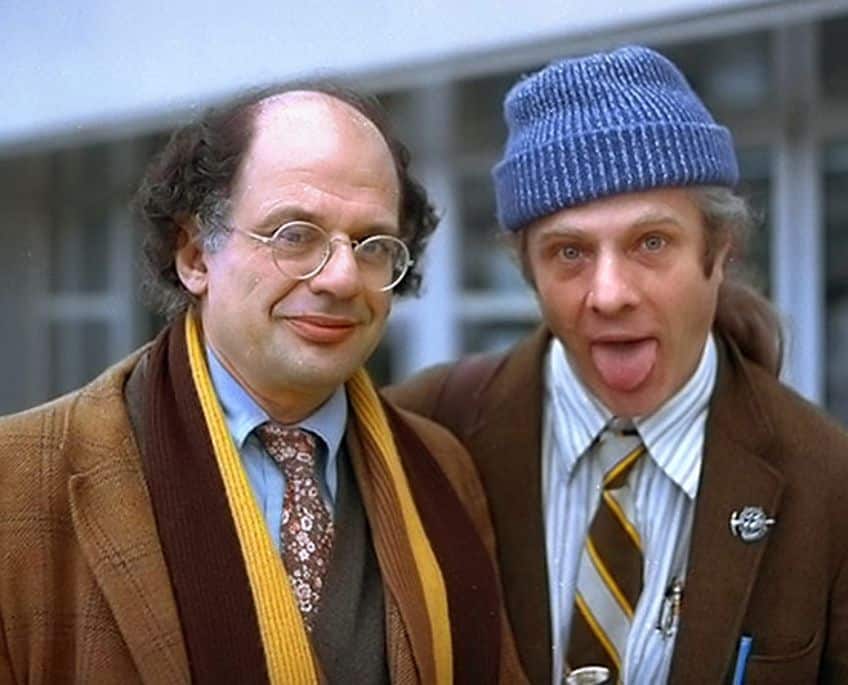
This last aspect of the poem wants us to see that all is actually holy, and this has quite a Buddhist feel to it, which does make sense as Ginsberg was a Buddhist. And that is where things reach their conclusion. Ginsberg has written additional material about Howl, but those pieces of further information will not be discussed here. Hopefully, this analysis of the best-known poem of the Beat Generation has helped you to further understand the text, but perhaps you have your own interpretations to consider.
The Themes of Howl by Allen Ginsberg
While I have performed a brief Howl by Allen Ginsberg analysis, it is worth having a look at something of an overview of some of the themes that were explored throughout this text. The primary, overarching theme on display had to do with a general critique of American society at large. However, that is a very broad proclamation, and many of the themes become parts of that whole.
For instance, there is a focus on the idea of disillusionment with the way that society has become, and especially with the immensely conformist mindset of the mid-20th century American culture.
The rather gleeful imperialism and dedication to a more unfettered style of capitalism meant that those like Ginsberg and the other Beats had a lot to criticize. Furthermore, this kind of culture led to a very repressive kind of a state of being, and as Ginsberg himself was a gay man living in a deeply homophobic country, he used Howl as a way to provide frank descriptions of homosexual sex.

This was a means of rebelling against the kind of repression that was so prominent, and this denial of repression is one of the major points in the poem. The same can be said of its depiction of drug use and mental illness. The use of these critiquing methods, such as going against American religious norms and capitalistic consumerism, allowed Howl by Allen Ginsberg to tackle topics that many were afraid to tackle at the time. These themes are only one of the reasons that this Beat poem has managed to reach the kinds of heights that it has, and it has remained that way ever since.
The Performance of Howl by Allen Ginsberg
There is something of a common misconception that Howl by Allen Ginsberg was initially written as a performance piece, but there is not any real evidence to show that. However, the piece has been performed, and by Ginsberg himself. So, while this poem was not actually written as a performance piece, it has been performed and certainly can be performed again.
The piece, and its strong use of emotional language, is also a perfect text for the kind of material that you might want out of a spoken word text.
The Cultural Impact of Howl by Allen Ginsberg
While we can simply read Howl by Allen Ginsberg and take in the various elements of the poem, that would actually be doing it a disservice of sorts. The poem’s cultural impact was an immense thing, and the reason for that is the fact that the poem had an impact on the law itself. You see, when this poem was first published, it was attacked by certain officials, and copies were even seized by the police.
Why did this happen? In simple terms, it was deemed obscene. There are many references in the poem to sexual intercourse, of both heterosexual and homosexual varieties, and drug use. These are the sorts of things that, in the mid-1950s, were very much taboo topics. People did these things, and they did them every single day, but you don’t talk about these things, remember? You keep quiet about them. And Howl by Allen Ginsberg was not being quiet.

The poem soon became the subject of an obscenity trial, and certain figures were arrested for having a part in its publication or sale. The judge presiding over the case ultimately deemed that the poem contained “social importance” which meant it should be treated as a piece of protected literature. The case would also gain national attention, and it was a major story during the mid-century period. So, while the poem itself may have had fantastic literary qualities, it was the societal impact that it had that can be seen as one of the lasting impacts of the text.
There are not all that many texts in the world that can be said to have had an impact in terms of the law, but Howl by Allen Ginsberg is one such text. This poem has made its way to the heights of the literary world to be seen as one of the most influential and important poems to have ever been written, and it was also a battle cry of the Beat Generation. Hopefully, this article has given this text a good defense through all of this, but you really should read the poem for yourself if you want to see it in all its majesty.
Frequently Asked Questions
What Is Howl by Allen Ginsberg?
Howl is a poem that has ultimately become one of the most influential of the 20th century. This text is now seen as one of the most prominent of the Beat Generation and a major influence on many subsequent writers in countercultural circles. The poem explores the society of the United States and serves to critique it and its repressive culture. The poem would even be caught up in an obscenity trial. There were several reasons for this but principal among them were the poem’s uncompromising depictions of topics such as homosexual sex.
Who Was Allen Ginsberg?
Allen Ginsberg was a writer who was one of the most prominent original members of the Beat Poets. He had a large impact on the Beats and would have a big influence on the countercultural movement in general. His best-known work is definitely Howl, but he did write many other poems and other works throughout his life.
What Are the Themes of Howl by Allen Ginsberg?
There are a number of themes that are explored throughout Howl by Allen Ginsberg, but they are all effectively oriented around a general critique of American society as a whole. This means that there are themes of societal disillusionment, spirituality, mental health, sexuality, and criticisms of conformity throughout the text. The way in which the poem is written can make it rather difficult to read upon first having a look.
What Type of Poem Is Howl by Allen Ginsberg?
In very simple terms, Howl by Allen Ginsberg is a free verse poem. It is made up of very long lines that make it unlike practically anything else that has ever been written. It also makes use of very unusual styles, such as having no real rhyme or meter, but instead using a jazz-like structure that is meant to give it more of a musical quality. The poem is unique and important for what it did with the form of poetry.
What Is Footnote to Howl by Allen Ginsberg?
This is a poem that was published the same year as Howl by Allen Ginsberg, but it is a little different. It is seen as something of a continuation of what was seen in the primary poem. It serves as a critique of American society, and it is written in a different style to the poem itself. For instance, it is only written as a single part but otherwise uses similar techniques to those found in the original poem.
Justin van Huyssteen is a freelance writer, novelist, and academic originally from Cape Town, South Africa. At present, he has a bachelor’s degree in English and literary theory and an honor’s degree in literary theory. He is currently working towards his master’s degree in literary theory with a focus on animal studies, critical theory, and semiotics within literature. As a novelist and freelancer, he often writes under the pen name L.C. Lupus.
Justin’s preferred literary movements include modern and postmodern literature with literary fiction and genre fiction like sci-fi, post-apocalyptic, and horror being of particular interest. His academia extends to his interest in prose and narratology. He enjoys analyzing a variety of mediums through a literary lens, such as graphic novels, film, and video games.
Justin is working for artincontext.org as an author and content writer since 2022. He is responsible for all blog posts about architecture, literature and poetry.
Learn more about Justin van Huyssteen and the Art in Context Team.
Cite this Article
Justin, van Huyssteen, ““Howl” by Allen Ginsberg – A Detailed Poetic Analysis.” Art in Context. March 19, 2024. URL: https://artincontext.org/howl-by-allen-ginsberg/
van Huyssteen, J. (2024, 19 March). “Howl” by Allen Ginsberg – A Detailed Poetic Analysis. Art in Context. https://artincontext.org/howl-by-allen-ginsberg/
van Huyssteen, Justin. ““Howl” by Allen Ginsberg – A Detailed Poetic Analysis.” Art in Context, March 19, 2024. https://artincontext.org/howl-by-allen-ginsberg/.




